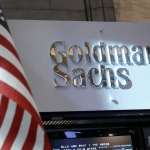For first-time investors, it's important to know the difference between the two areas and how they can enrich your portfolio.
It takes a lot of time, dedication, and practice to become a pro in the trading landscape. You need to learn everything there is to know about your industry, how the markets can change, and even the language that people use to describe the evolution of a share or position. Before you can get deeper into complex concepts like penny stocks or day trading, it’s worth making sure that you have a good grasp of the basics. For instance, do you know how to differentiate between a stock-based mutual fund and an individual investment in the stock market? Today, we’re going to discuss these two solutions at length, to help you understand what kind of investment opportunities you want to get involved with.
The Mutual Fund Solution
A Mutual fund or MF helps you to diversify your portfolio, by giving you a small percentage of a wide selection of different assets or companies. Through a single transaction, you can take part ownership of dozens of different companies or groups at once. This is a great way to build out the number of options you have when you want to avoid having too many eggs in one basket. The more you explore this avenue, the more you’ll learn about different kinds of funds.
For instance, an exchange traded fund is a kind of MF that focuses on an index – such as the S&P solution – one of the best known in the current marketplace. When you invest in these opportunities, you can begin building a much wider portfolio without spending tons of cash straight away. Many people recommend taking the MF route if you’re looking forward to growing your strategy, but you don’t have a lot of money, or you don’t know exactly where to get started.
[ymal]
The Individual Route
Taking the individual approach to trading means that you have a much more focused way of buying shares in companies and other assets. If you’re interested in spending your money in an awfully specific area, then you can just buy a handful of shares within that single stock. This is a good way to dip your toes into the waters if you’re getting started and you know a particular brand that you’re interested in. Just like with funds, it’s possible to diversify your portfolio over time by getting involved with a lot of different assets individually. However, it often costs quite a bit more to spread your money out in this way, as there are limits to how little you can spend when focusing on one opportunity at a time.
Although the individual route delivers more risk and less opportunity for diversification than the fund option, there are benefits to taking this approach. For instance, it’s unlikely that any combined strategy with an MF will give you a meteoric rise in value over a short space of time. On the other hand, you can see this happen quite often with the right single solutions. As with most things in finances, the right strategy is all about finding the balance between risk and reward.














